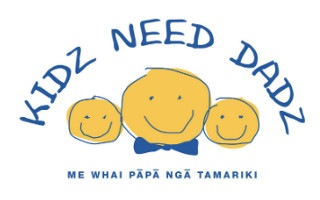Biological Fathers
By Peter Walker
In August, Documentary New Zealand followed the emotional roller coaster ride of three couples “Facing Infertility’. Before this, the subject of Assisted Reproductive Technology (ART) was raised in June when two women intended to be inseminated with their dead husbands’ previously frozen sperm. Increased public debate ensued.
Critics decried the immorality of it all; advocates claimed victories for science, women, children, or society as a whole. But most New Zealanders probably felt they had other things to think, and worry, about.
An informal survey of women by this father about the prospect of insemination with a dead husbands’ sperm yielded responses from “Good on them” to ‘That’s sick.” And men seemed unable to get past the tawdry idea of masturbating in some seedy little room adorned with “girly pics” and complete with a TV and video for the truly inhibited.
ART is an expensive,complicated and usually traumatic experience, with only a 25% success rate.
The ethical considerations are many. Should science be given the mandate to do something just because it can? Who will assume authority to establish guidelines and limits on scientific activity? Who decides the fate of unused embryos?
These and sociological considerations blend to create extremely complicated, and controversial, questions:
Should homosexual couples be allowed public money to use ART? Is the present system adequately guarding the rights, and enforcing the responsibilities, of all parties involved? Should we as a society , in this way, encourage the increase of the “nontraditional” family, i.e. single parent households and same sex parenting?
Editorial comment on the news reports in June, in various ways inevitably raised the issue of children’s rights, an important factor significantly absent from political and legislative debate. ‘We have no specific legislation that requires the child’s interests to be considered”, writes Sandra Coney, in the Sunday Star-Times, 20.6.99.
Children from sperm donors “have the right of access to information about their genetic heritage” according to written information supplied by The Fertility Centre in Christchurch. This means that semen donors “may be contacted by resulting children (at a later appropriate stage)” and are accepted only on agreement of those terms.
However, parents are under no obligation to tell these children about their origins. Donors, according to Mark Leggett, Business Manager of The Fertility Centre, have the right to specify who can and cannot (married, single, gay, etc) use their sperm.
The National Ethics Committee on Assisted Human Reproduction (NECAHR) ‘”is required in its current terms of reference to ‘ensure that rights of patients, donors, and resulting children and participants in research are protected.
However, NECAHR does not have any statement of what the child’s rights or best interests are to guide it in its work,” writes Sandra Coney.
In Protecting Our Future, a report co-authored with Anne Else and published by Women’s Health Action Trust, Auckland. While international human rights and children’s rights conventions affirm the rights of children as being of “primary consideration”, they tend to be nonspecific and as a matter of law are only beginning to be tested in the case of ART children.
Therefore, the rights of adults, for example the right “to marry and found a family’, and the right to the provision of services regardless of sex, marital status, religious belief, colour, race, ethnic origins, disability, age, political opinion, employment status, or sexual orientation, tend to overshadow the rights of children, and especially those of “potential” children.
Thus, the issue of deliberately creating single-parent families (predominantly mother and child) and same-sex parent families is raised and clashes with legal documents such as the United Nations Convention on the Rights of the Child, which asserts meaningful contact with a mother and a father as a child’s right.
Mark Leggett confirms that ART services are provided to single women and lesbian couples.
The industry argument is that ART should be made available to create any circumstance that could occur naturally.
Is it (ever) in the best interest of any child to be born without the prospect of any relationship with a father (or mother)? More and more the answer in public forums is coming up no. Another TV documentary in August chronicled the many responses of children in search of their genetic heritage, and of donors who have had resulting children.
The issue of fatherhood of, and to, the child was central.
“Common sense”, writes Rosemary McLeod in The Press, 17.6.99, tells us that to be deprived of a father is to lose half our identity, half the store of love for us in our young lives.”
Next: Keep Trying




